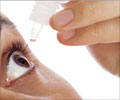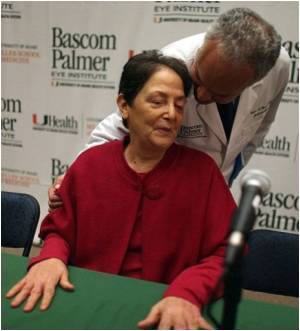The World Sjögren’s Day is observed to increase awareness about the autoimmune condition that causes dry mouth, dry eye and joint disease.
- Sjögren's syndrome is a common though lesser known autoimmune disease
- A lack of awareness about the condition results in a number of undiagnosed cases
- The Sjögren's Syndrome Foundation continues its efforts to increase the awareness about the condition
The World Sjögren’s Day (pronounced “show grins”) is observed on 23rd July every year. It was established by the Sjögren’s Syndrome Foundation, which is involved in the research, education and awareness about the autoimmune disease. The day coincides with the birth anniversary of Dr. Henrik Sjögren, who first described the condition and after whom it is named. Sjögren’s syndrome is an extremely common autoimmune condition, and yet not too many people are aware of the condition. The Sjögren’s Syndrome Foundation has been in the forefront to promote awareness and research in the field. Its scientific initiatives, some of which are ongoing, include the development of a new Sjögren’s classification criteria which was recognized by International bodies, the development of clinical practice guidelines to standardize the treatment available to patients, supporting the development of new diagnostic methods and treatments to help to deal with the condition, and the establishment of the Sjögren's Registry, to maintain a record of the patients.
- Sjögren’s Day is an autoimmune disease that mainly affects three organs, the lacrimal gland, the parotid gland, and the joints. The lacrimal gland is a small gland on the upper and inner aspect of each eye that secretes tears. The parotid glands are situated under each cheek and secrete saliva. Sjögren’s syndrome therefore causes dry mouth and dry eyes. Symptoms indicating a dry mouth may include difficulty with talking, chewing or swallowing, peeling of lips, a burning throat and tooth decay.
- Like other autoimmune diseases, where the body itself reacts against a part, Sjögren’s syndrome is more common in women, who account for 90 percent of the cases. Most cases occur over the age of 40 years.
- Sjögren’s syndrome can also affect other organs including the lungs. Fatigue is a common feature. Women may suffer from vaginal dryness as well. Patients may be at a higher risk of developing a blood cancer called lymphoma.
- Sjögren’s syndrome affects about 4 million Americans and is the second most common rheumatic autoimmune disease. This number excludes the large number of undiagnosed patients. Yet, not too many people are aware of this condition.
- In most cases, the condition is diagnosed around 5 years after the symptoms appear, since doctors may treat the individual conditions without considering the overall combination of symptoms. Doctors may not be able to correlate the symptoms, as the patient may go to an orthopedic surgeon for the joint disease, an eye doctor for the eye symptoms, and a dentist for repeated dental caries. This results in delay in initiating the correct treatment.
- The delay in diagnosis and the inability to function normally affects the patient physically and emotionally which could negatively impact the life of a patient.
- In 2012, the Sjögren's Syndrome Foundation aimed to reduce the time for diagnosis through its 5 year goal, “50in5”:“To shorten the time to diagnose Sjögren’s by 50% in 5 years!” It planned to achieve this by increasing awareness among the general public, as well as the healthcare professionals, and increasing the involvement from its stakeholders. In fact, the efforts of the foundation has already reduced the time to diagnosis to three years.
- Like most other autoimmune diseases, Sjögren’s syndrome does not have a cure, but the symptoms and progression of the disease can be controlled with the help of multiple medications. The treatment, hiring additional helps and inability to do certain jobs could increase the financial burden of the patient.
Ten Sjögren’s Survival Tips
- You will be required to take pain killers intermittently. Opt for non-steroidal anti-inflammatory drugs (NSAIDs) and remember that they are best taken with food or milk to avoid stomach upset.
- Try and find a support group. There are numerous online groups too that are available. Be well informed about the disease and what is best for you.
- Find a specialist doctor or a caregiver who will be supportive, willing to listen to you, and understands your disease well.
- Eat food that is soft and moist. Avoid rinsing mouth with alcohol or witch hazel - they can cause further dryness.
- Use moisturizing gels or vitamin E to sore parts of the mouth or tongue for relief.
- You can use petroleum jelly or bath oil or coconut oil or olive oil, instead of moisturizers (if not available) .
- Use preservative free artificial tears frequently, and don’t use any creams on eyelids, as they may cause irritation, if they enter the eyes.
- Don't stand too long under a hot shower, as it can wash away the natural oil of the skin. Use moisturizers after shower on the skin.
- If you go swimming – take a shower afterwards and apply a moisturizer to reduce dryness and itching of the skin.
- Always try and get some exercise even if there are aches and pains that trouble you. Avoid becoming a couch potato!
- Sjögren’s Fact Sheet - (https://www.sjogrens.org/)










